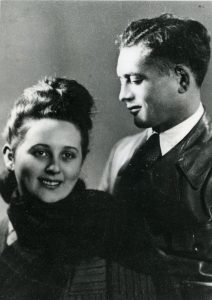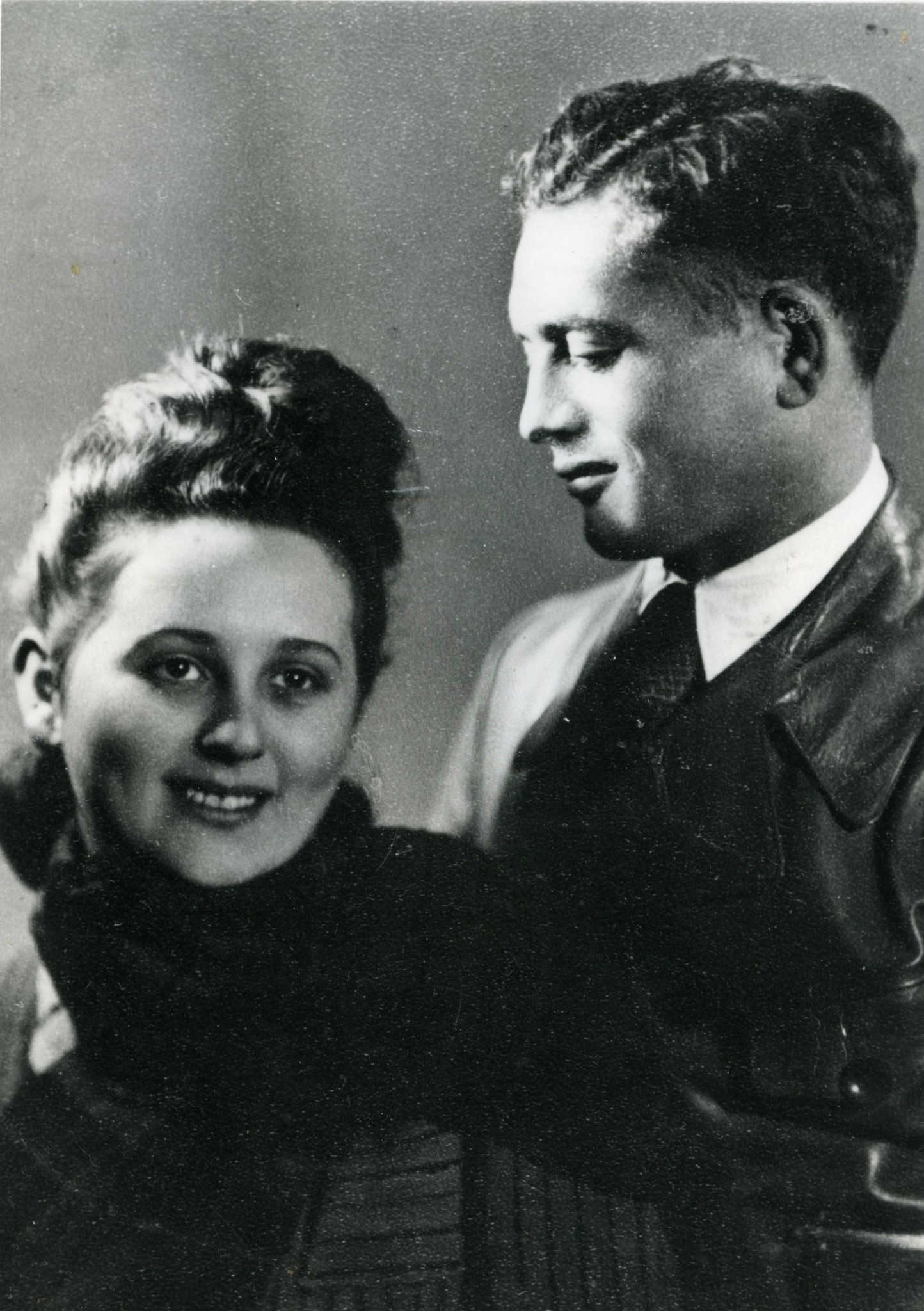
Alan Zimm and Halina Dexler were married in 1948.
For Alan and Halina Zimm, the Holocaust is more than just a historical event. It was their reality.
When Nazi Germany invaded Poland in 1939 they both were forced to endure the Holocaust, losing family members and friends in the process.
The couple, in cooperation with the Virginia Holocaust Museum and English teacher Steve Wozny, visited Godwin’s sophomore class to share their stories about their survival during the Holocaust and the Nazi Regime.
Alan Zimm grew up with a family of six brothers and three sisters in Kolo, Poland, a short distance from the Warsaw. When the small town was bombed by German troops, he and his siblings were captured.
Alan was sent to Buchenwald, a concentration camp near Weimar, Germany.
“No one on the train knew where we were going,” said Alan. “We had no food for three days, and many died on the way there.”
After staying at Buchenwald for a month, he was transported to Mittelbau-Dora, a labor camp near Nordhausen, Germany, where he made rockets for the Nazis. While there, he befriended one of the engineers who would leave Alan sandwiches in his work drawer.
“Because of him, I survived,” said Alan.
Alan said that Belsen was peacefully liberated by the British Army in the middle of one night.
“They told us, ‘You are free! Do not worry about the Nazis, they can no longer do anything to hurt you,’” said Alan.
At the time, Alan only weighed just about one hundred pounds.
Things were different for Halina Zimm.
During the Nazi occupation, Halina’s father decided to move his family to a small town outside of Lodz.
On the way to the village, they were stopped by Nazi troops, who interrogated them and took all of their belongings.
“After that, we had nothing on us but the clothes and shoes we had on,” said Halina. “They even took my father’s wedding ring.”
They would live in a cottage for three years.
Rumors spread around the village that the Nazis were on their way to their area. Halina’s father disguised his children as Christians and made them leave. They met a woman who gave tickets to Halina and her older sister.
Halina said, “My father told me, ‘Your name is Wanda and you are now Christian. You are no longer Halina.’”
Halina knew she would never see her parents again.
She soon found a job with a couple working for the German army.
“She was a beautiful woman,” Halina said, “I looked up to her and she was my example.”
While working, she would often pass by the Warsaw ghetto.
“It was terrible seeing them suffer,” said Halina. “I could not let them know I was Jewish, and I felt horrible.”
Halina also remembered the uprising of the Warsaw ghetto.
“It was awful seeing the fires. I could hear the children screaming and dying,” Halina said.
Halina became a part of the uprising herself, and she was captured. However, as she was ready to be transported to a labor camp, a German soldier allowed her to escape.
“I couldn’t believe it,” she said. “I was free.”
Halina said, “You cannot judge someone by how they look. There cannot be hate in the world.”
Fast forward to 2017, and the idea of hate and divide remains in the United States.
In September, Godwin Art Teacher Dana Morris reached out to the Holocaust Museum interested in doing a project about the refugee crisis. Morris saw a very powerful message about the refugee crisis on the Holocaust Museum’s website, and wanted to do a project relating to it with her students.
“I thought we could make a connection from what is going on with the refugee situation today to history, before and during WWII,” said Morris.
“I remember hearing that the number of refugees in the world had reached the same number as it did during WWII. I wondered if anyone was paying attention and how I could make a personal connection about this issue with my students.”
Godwin students were able to interact with refugees within our communities and hear their stories.
“Meeting someone and hearing their personal stories was very meaningful,” said Morris.
The students created an array of different artwork, including sculptures, paintings, collages, and mixed media. Their artwork is set to be on display beginning April 4 at the Virginia Holocaust Museum.
“I think it is more important than ever to use art as a lens to raise awareness about community and world issues,” said Morris.
“As a cultural tool, art helps humanize and actualize the emotions of social issues. I hope this project will encourage constructive conversations and help to break down any fears people have about refugees. We are all human.”


Great story–proud to hear about the creative and relevant ideas Godwin teachers are putting into practice in these scary times. And this story uses a light touch, reminding us that in hindsight the refugees we regard as obnoxious today will be regarded as heroes tomorrow, invited to classrooms to tell the stories of those who ignored them, and those who stood up to save them.